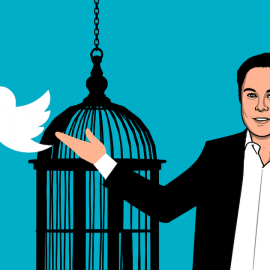

This article is an excerpt from the Shortform book guide to "The Hard Thing About Hard Things" by Ben Horowitz. Shortform has the world's best summaries and analyses of books you should be reading.
Like this article? Sign up for a free trial here .
Is your business taking off but you don’t know how to manage people? How do you create a good company culture? What is Freaky Friday management?
When you own a business, one of the most important parts of managing is to create a good company culture and take care of your employees. Sure, some companies with terrible workplaces still manage to become successful, but you should aim to create a workplace that your employees are proud to work in.
Keep reading for advice on how to manage people in your growing business.
How to Manage People
Once you hire the right people and train them, you’ll need systems in place to keep them productive and happy. You should also prepare to change how you manage people as your company grows—what used to work with just 5 people working around a table will fail when you have 50 people.
Create a Good Company Culture
Culture consists of key values that define what your company does and how it does it. Examples of key values include frugality, customer obsession, and beauty of design. Good key values meaningfully distinguish you from your competitors.
A strong culture is practically useful—it helps you filter for hires who will fit, and it shapes the behavior of people at the company.
Beyond just articulating vague cultural values, implement a simple, scalable behavior that reinforces the key value. Here are examples:
- Frugality: At Amazon, Jeff Bezos knew that competing in the cutthroat online retail industry would require the lowest pricing, which required the company to save as much money on overhead as it could. He built the company’s first desks by buying a door and screwing legs into them. This reinforced the cultural value of frugality and how the employees are saving money to save the customers money. Even today, as one of the world’s largest companies, Amazon still uses door desks.
- In service of entrepreneurs: At Ben’s venture capital firm Andreessen Horowitz, the team’s cultural value is to be in service of the entrepreneur, not to be their bosses like other VCs. They consider it disrespectful and inexcusable to be late to a meeting with entrepreneurs, so they instituted a late fee of $10 per minute (being ten minutes late required paying $100 to the other person).
- Innovation: In the early years of Facebook, Mark Zuckerberg wanted his team to innovate quickly and avoid being stifled by caution. He adopted a slogan: “Move fast and break things.” This gave even young employees permission to innovate, even at the cost of stability.
These small actions reinforced the key cultural value across the company in a highly scalable way. Importantly, they also change how people behave in the business and how the company accomplishes its goals. In contrast, foosball tables and free snacks don’t actually drive how the business operates; therefore, they’re not part of culture, they’re just perks.
Note also how the cultural examples above are highly distinctive and thus inappropriate for other companies. A company based around beautiful design, like Jack Dorsey’s Square, would find door-desks abhorrent. This is OK—a strong culture helps you filter out people who don’t belong and wouldn’t be happy in your company.
Take Care of the People
Take care of the people, and the products and profits will follow. If you reverse the priorities, you’ll end up with a miserable workplace and possibly sabotage your success.
You can best take care of your people by making your company a good place to work. In Horowitz’s terms, in a good place to work:
- People are clear on what their jobs are and how success is measured.
- People believe their work makes a difference to the success of the company and, by extension, to their personal success.
- They have as few barriers to getting work done as possible. A good work environment avoids office politics, infighting, and overly bureaucratic processes, which all get in the way of doing good work.
- People enjoy working with the people around them. They don’t always have to like each other personally, but they respect that everyone is pulling their weight.
A poor place to work inverts all of these. People aren’t clear what their jobs are; they don’t know if their work means anything; their work gets stymied by dumb obstacles; and people despise whom they work with.
Is a Good Workplace Necessary?
Some might argue that a good workplace alone isn’t enough to build a successful company—there are plenty of workplaces with great cultures that failed because they failed to achieve product/market fit. Conversely, a good workplace isn’t necessary—there are companies with horrid cultures that still became massively successful.
So why build a good workplace at all? First, because good workplaces help during bad times. When your company starts failing, your team members will start questioning whether leaving is a better career and financial decision. In bad times, other than needing a job, the only thing keeping employees around is enjoying their work.
Second, having a good workplace is an end in itself. Even if your company fails, you can help people feel proud of the work they’ve done and the people they’ve worked alongside. This reputation will stay with you even after your company dies.
Balancing Creativity vs Accountability
As a manager, you want to balance creativity with accountability. You want to give people freedom to come up with new ideas and notice problems, but you also want to hold them reasonably accountable so their work doesn’t get sloppy. Conversely, you don’t want to be so tight on accountability that you stifle creativity.
Here’s an example situation: Say an engineer comes to you and points out a deep product problem that she estimates will take 3 months to fix. Everyone agrees the problem is worth fixing if it takes just 3 months. She later finishes the task, but it takes 9 months instead. How should you react?
- If you praise her for her creativity, then other people who work hard to meet their timelines will feel their discipline is pointless. Work will get sloppier.
- If you chastise her for taking triple the time she estimated, then people will learn that taking risks can be punished. It’s better to take the low-risk work that can be solved easily and on time.
But it’s not black and white. Each situation demands a different response. How you should react depends on a few factors:
- How difficult the task was: The more complex and unpredictable a task, the more leeway you should give. Rearchitecting your technology is hard. Sending an email by a deadline is easy. The first should be given more flexibility than the second.
- How senior the person is: More experienced people should be held to a higher standard of forecasting and results. For junior employees, slip-ups are learning opportunities.
- How appropriate the risk was: Judge a person’s decisions whether they seemed sensible at the time, given the information they had. For the engineer in the example above, did the product problem really need fixing, or was it a low priority that she wasted 9 months on?
Adjusting your feedback this way will help balance creativity and accountability in your team.
Freaky Friday Management
It’s common for two departments to clash with each other. The sales team might blame the product team for moving too slowly and falling behind competitors. In return, the product team might blame the sales team for bringing too many competing priorities. These conflicts can drag everyone down, especially if the two departments need to work together frequently.
When these problems are irreconcilable, Ben suggests the “Freaky Friday” technique—have the department heads do each others’ jobs for a period. This is named after the film Freaky Friday, where a bickering mother and daughter switch bodies and have epiphanies about how difficult the other person’s life is; when they return, they have a newfound appreciation for each other.
Likewise, a department head who blames her colleague probably doesn’t appreciate the full extent of what the colleague has to deal with. Forcing her to take her colleague’s job will cast her actions in a new lens. After undergoing Freaky Friday, the two department heads will likely find more productive ways to resolve their conflict and bring harmony to both teams.

———End of Preview———
Like what you just read? Read the rest of the world's best book summary and analysis of Ben Horowitz's "The Hard Thing About Hard Things" at Shortform .
Here's what you'll find in our full The Hard Thing About Hard Things summary :
- What it was like to head a company through the dotcom bubble and subsequent burst
- Why failing is normal
- How to build a good place to work






